10
Advertisement for Singer electric, page 6 and 7.
1910
Mission, BC
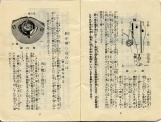
11
Advertisement for Singer electric.
1910
Mission, BC
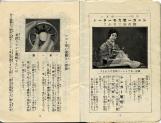
12
'Attachment for hemming,' page 22, 'Attachment for quilting,' page 23.
1910
Mission, BC
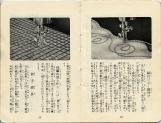
13
'Attachment for gathering,' pages 32, 35.
1910
Mission, BC
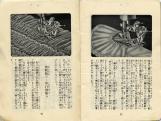
14
For centuries, in Japan, one of the basic skills that a young woman had to have before marriage, no matter how humble the home, was the ability to sew a kimono. In the rural areas, many started with the raw silk or cotton, made the thread, and dyed and wove the cloth also. With the Meiji Restoration and the introduction of Western style clothes, Yosai often also became a necessary preparation for marriage.
15
Piece of silk salvaged from a kimono brought to Canada from Japan (nee Watanabe)
1928
Fukui Prefecture, Japan
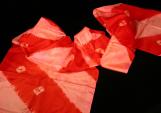 Credits:
Credits:
Masaye Sato.
16
In Canada, too, this tradition was continued. The ability to draft patterns and to sew was considered by many to be a necessary skill for a bride. The many successful dry cleaning and pressing businesses that Nikkei ran in urban areas depended also on the alterations, repairs and dressmaking that were a significant part of these enterprises. Young women who could participate in this end of the service were desirable brides.
17
Detail of a piece of silk.
1928
Fukui Prefecture, Japan
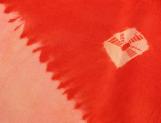
18
Many Nisei girls in the 1920s and 1930s attended sewing schools rather than high schools. Because Japanese Canadian girls were rarely hired by white businesses, this was considered to be much more practical. Economy, and the difficulty of obtaining a proper fit from purchased clothing, necessitated sewing one's own clothes. I recall an Issei woman in my neighbourhood whose dresses were all of the same style. She just varied the fabrics. My mother had an ingenious way of sewing my dresses so that the waist-line as well as the hem could be let down as a I grew!
19
In the ghost towns during the war, everyone sewed, it seemed. Otherwise, with only Eaton's and Simpson's catalogues from which to purchase dresses, everyone would have been dressed alike! Every centre had a number of sewing schools. Some husbands became the cooks and childcare givers while their wives taught sewing. As before, many young women attended sewing school rather than high schools in these camps.
20
Pattern templates used by Kinori Oka
1920
Japan

21
With the closure of the camps and dispersal of the Japanese Canadians across Canada, there were a few sewing schools that started up again. The Marietta School of Costume Design in Toronto comes to mind. A number of young women made good use of their expertise by becoming dress-designers and pattern drafters in clothing manufacturing establishments.
22
Sample hakama
1925
Fukui Prefecture, Japan
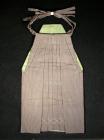
23
Kohide Nakamura's yosai bako
1920
Mission, BC
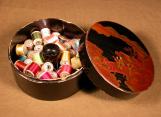
 Credits:
Credits:






